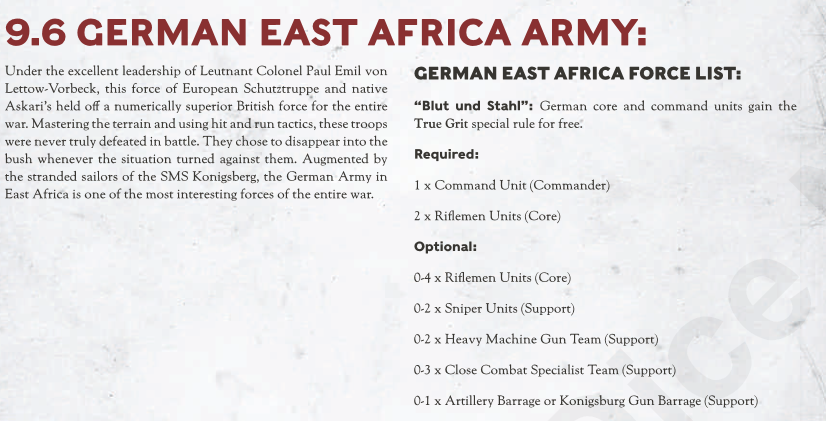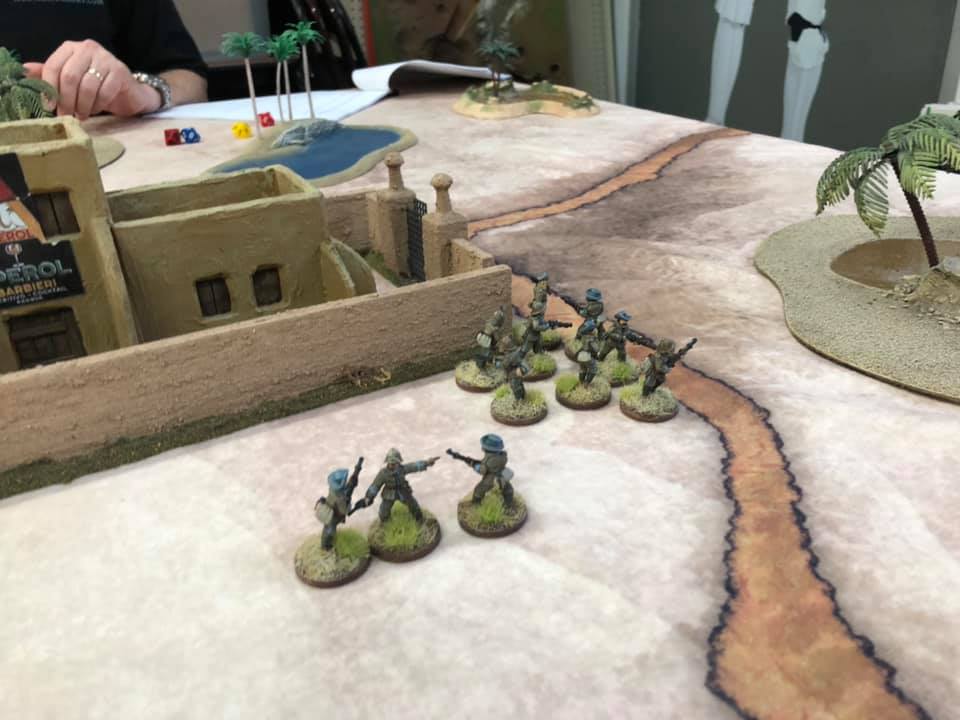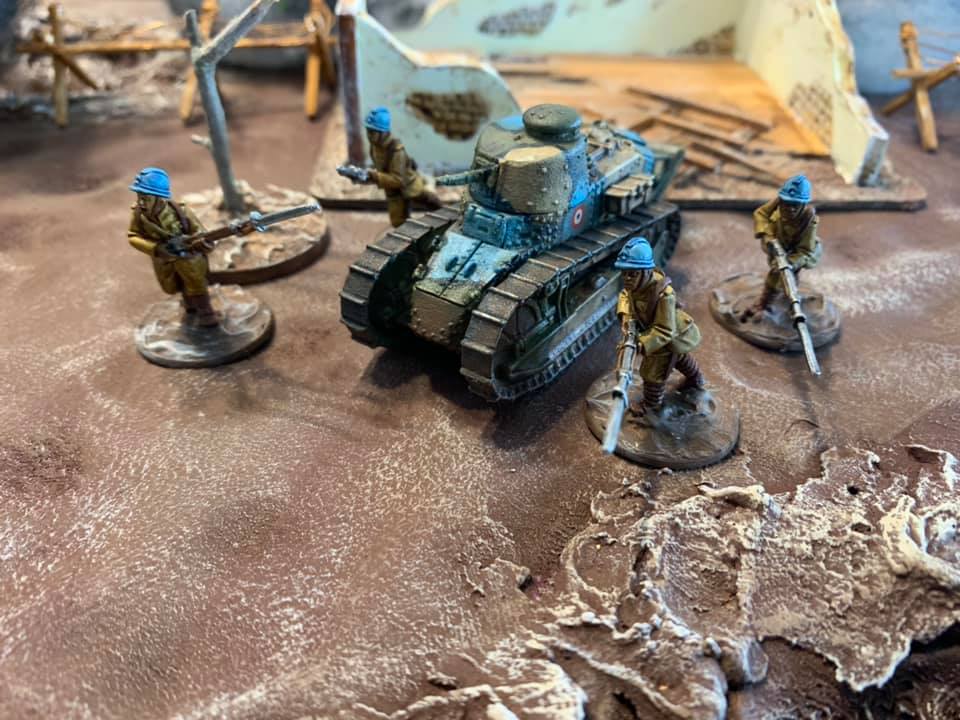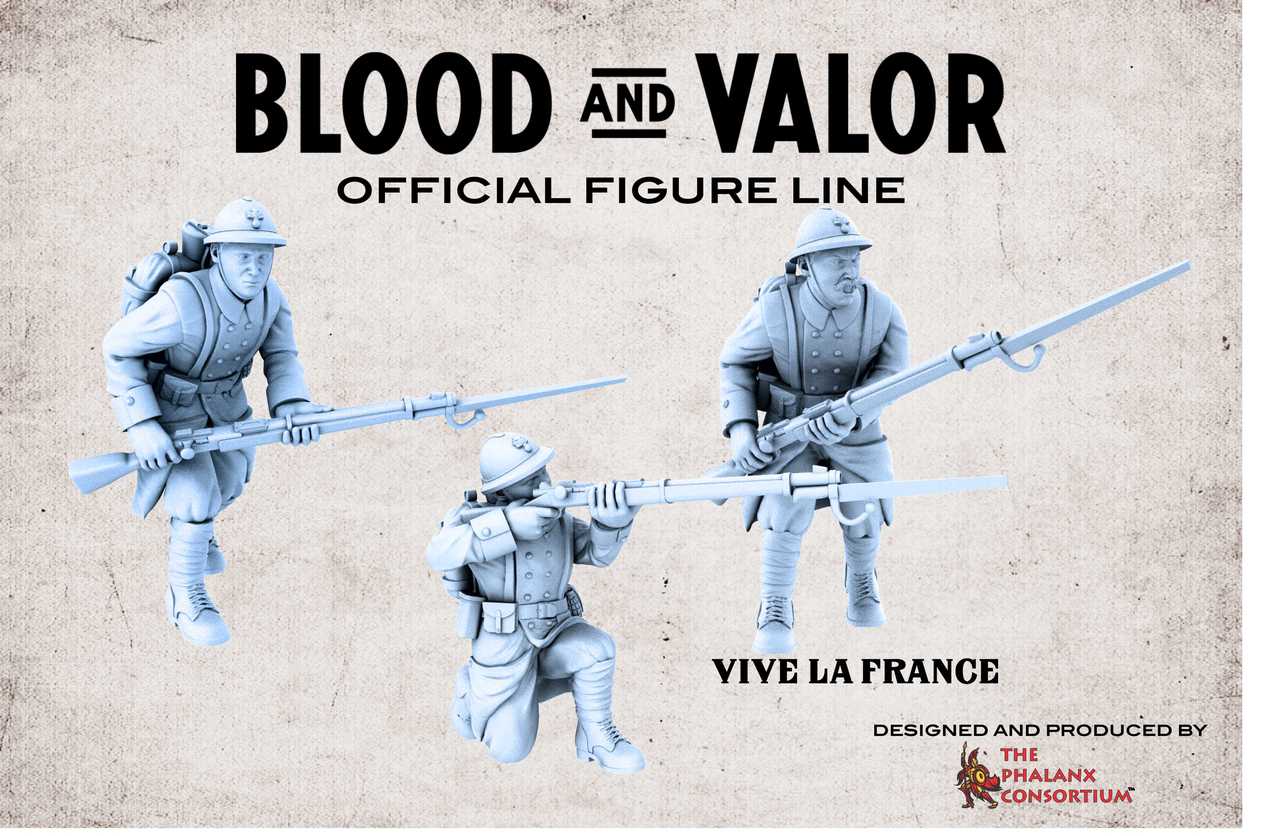Blood and Valor List Making Tips
Now that has hit the streets many gamers are starting to learn the mechanics of the game, they are trying to figure out what armies they will play in the game. While gamers have a lot of armies to choose from the basic composition of the forces in the game and the basic capabilities they possess are very balanced. This article will go over how to build a list that fits your personal playing style and maybe win a game or two.
The Basic List

Every faction in Blood and Valor requires you to have a commander and two core infantry units. You can add to this by expanding your list with another 0-4 infantry units which count towards your count of core units. This is important because you can only get one support unit for each core unit in your force, so if you want to include units like snipers, HMGs, artillery, and close combat teams into your list you will need at least 4 core units. I would recommend to players not get very focused on the support options, the regular infantry unit is your most important unit.
Fire and Maneuver
It should be of no surprise that a platoon level skirmish game requires the use of actual military tactics. Blood and Valor are all about how well you can use your force to lay down firepower while you maneuver to win the game. While the common (but false) perception of the Great War was static trench lines the game’s scenarios are all about maneuver, so you cannot just sit back and mow down your enemy as they advance.

The unit that will do the heavy lifting when it comes to fire and maneuver are your infantry squads so you will need way more than the 2 required units. Some players have asked how big they should make these units and my recommendation is no less than 8 models. I know many players like to Min/Max their formations to get a bigger initiative pool, however, small units do not generate a lot of firepower and will get swept from the table quickly. If the unit has an LMG upgrade always take it, however I would really think about arming them up with grenades/rifle grenades, those are only good once you are close in if you can get close.

I usually ran ten models per unit during playtesting and it seemed to work very well. Once you add the LMG to the mix you are getting 13 shots off per turn for each unit. Remember to always take shots when you can, no matter the math, every ten hits and you need to get as many hits as you can since just two fatigue on your opponent causes them to lose an action during its activation.
A force that has at least 4 squads with 10 models each gets pricey (an average of 180 points w/LMG upgrade) and does not give you a lot of room to add upgrades. However, you want your units pushing out at least 10 shots per turn so I would recommend 8 model squads with an LMG or at least 10 without the upgrade.
Commander and Support

So now that you have your core force established the next question to answer is what you should select for support options and a commander. I will address the commander first. If possible always try to take the Captain (15-pts) option for your force. While it shares the command radius of the Lieutenant (0-pts) option, the fact they get at least two command points comes in very handy. Placing your commander near your maneuvering units will really help you out as they push your units with an extra move or a quick rally action before they act.
When it comes to the other support options in the game my best answer is “it depends” and can be answered by determining your play style. It is probably best to go over each major support option to see this they are right with for you.

Heavy Machine Gun: These can really control the table and will cause your opponent to avoid them as much as possible. The key to the HMG unit is its initial placement. While they can move during the game they cannot move and shoot, so they are vulnerable on the move. At an average cost of 20-pts per team this unit puts out the same amount of firepower as most infantry squads.
Remember the +1 they add to their targets save score, and HMGs become a “must take.”
However, as stated before, they are not mobile at all and with only three models in the unit they will be an early target for your enemy. Although taking two seems to be the best option, they are very defensive in nature. These are a good fit for a cautious player who believes they can win a scenario by hanging back.

Close Combat Teams: These assault units have so much flavor in Blood and Valor, from Harlem Hellfighters to kilted Scots the game has a wide variety of troops who are experts at close combat and they all have different rules to make them unique.
A lot of this depends on the national rules for that faction, so the Assault Experts rule for the British really makes them deadly. The German Stormtrooper unit with its SMGs and special rules is also another one that is very good. The only problem is the cost for these units, they are more expensive than regular riflemen despite the fact they pick up so many special rules and come with grenades.
Taking an eight model close combat squad comes to 48-56 points and just may not be viable on certain lists. This unit also tells your opponent “here is where I plan to attack” which is something a player should never indicate to their opponent. I playtested these units quite a lot, however when I started to make lists for casual play I never added these guys to my force list.

Snipers: Not every force gets snipers (ex. USA) in Blood and Valor and based on what social media is saying about them they seem to be very popular. They hand out fatigue to their targets and can really slow down an advance, or take out those pesky HMG teams. Once they are targeted, however, they are destroyed fast.
Artillery/Gas: These one-shot support units are a must for an aggressive play; you can use them to silence enemy HMGs or clusters of troops who are deployed to block your advance. If you roll low, however, the bombardment can come in right on top of you, so think of this before you add them to your list.
Trench Gun/Flamethrower/Catapult: Only certain forces have them and once again you have to really think of your playstyle before you include them. If you are aggressive the flame team is a must, but like the Close Combat specialists, you have to get in close to use them. The Trench Gun and Catapult only exist in a few places and like the HMG they are not mobile and may be good for the cautious player.

Cavalry: Another unit that makes its appearance on only a few lists. These are “must consider” for an aggressive player. They have mobility so they can exploit an opening on the table and once they get to their destination they can dismount and fight on foot. Once again this unit is pricey and since I hate painting horses I may not field these models in the future (I used proxies for the playtesting).

Special Characters: I loved recommending these characters to Rufus for inclusion in the game. They really add so much flavor. After playtesting them, however, I had no desire to put them on the lists I plan to play. They are costly and sometimes they do not bring the capabilities you desperately need for success in certain missions. If I have some points to spare, I would add one of the many interesting heroes covered in the game.
What is the best list for me?
I feel that no matter what your playing style is that Blood and Valor has the right mix of units for you. Overall the game has all the tools an aggressive player needs and since the missions require to move I would lean toward taking swift and deadly units while not wasting too many points on static units.

The suggestion that taking at least four squads with eight to ten models each is just a must in the game. You can split these four units up, making two regular (more expensive) and some Inexperienced. Since a lot of times you will shoot at long range the to-hit score will be a 10 no matter who is providing covering fire for your advancing forces.
Also, make sure your opponent pays dearly for any unit left out in the open without cover. Whenever an enemy unit was foolish enough to be caught in the open, as many of my units as possible worked to take this unit out of the game before they got into cover again.

Another fact to note is that each nationality in the game plays a bit differently as well which a player should decide before selecting a competitive list.
I know gamers will find a lot to like in Blood and Valor and with so many options available it will make gameplay fun and challenging for a long time into the future.
